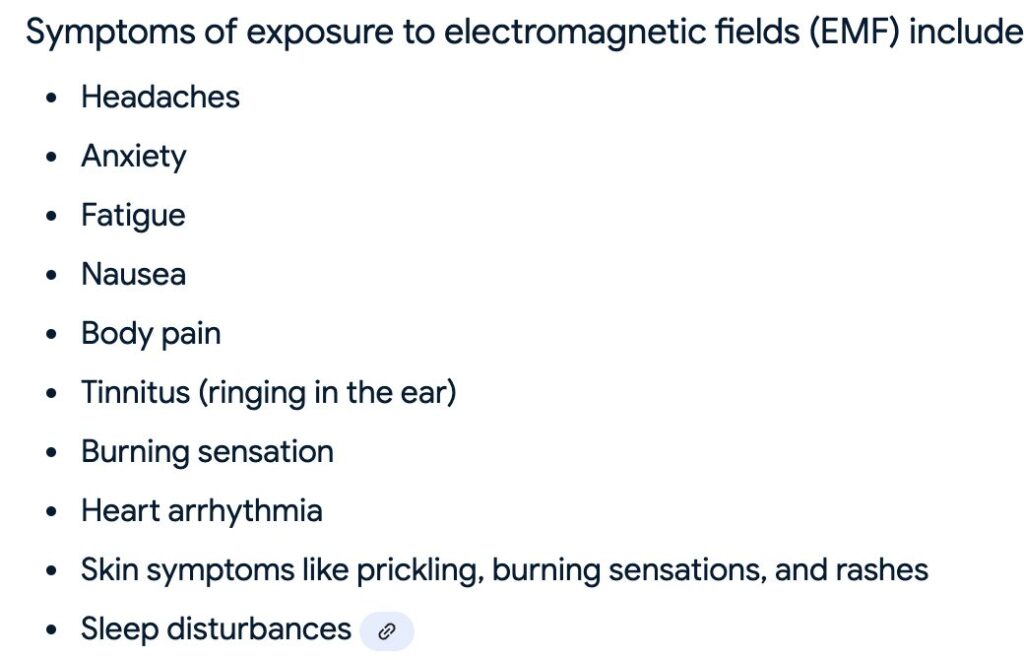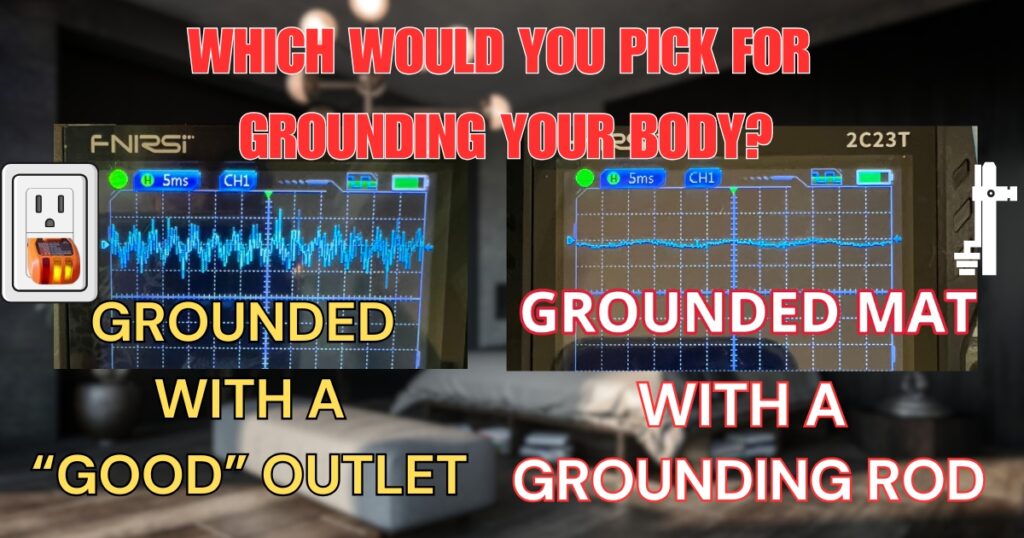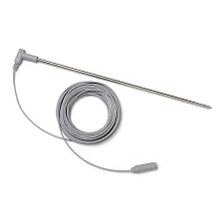I’m doing something a bit different by setting up my studio in an unusual location, my bedroom. There’s a purpose behind this. I want to talk about electromagnetic fields (EMF) and show you how they surround us through the electronics and wiring in our homes. Even the lamp next to my bed contributes to the EMF exposure. In this article, I’ll explain why EMF can potentially be harmful, how to identify it, and how you can fix it.
Before diving into the details, let me explain my setup. I’ve got several meters here to measure different aspects of EMF. You don’t need all these tools, but they help me illustrate the concepts clearly. The first meter I’m using measures body voltage, which essentially shows the amount of alternating current (AC) running through my body. This meter is grounded to the earth outside using a dedicated cable that connects to a grounding rod. This grounding rod is key because it provides a clean earth ground for accurate readings. Without a proper ground, the readings from these meters can be unreliable.
When I measure my body voltage using this meter, I switch it to AC voltage mode, which many people overlook. This setting measures the AC electrical voltage flowing at 60 Hz here in the United States. My initial reading shows about 4.8 volts of AC running through my body. This high voltage is caused by the EMF around me — my lamp, the electrical wiring in the walls, and other electronics. Through a process called capacitive coupling, my body, which is naturally conductive, picks up and carries these electrical currents. This can lead to a range of symptoms associated with EMF exposure, such as headaches, fatigue, inflammation, and insomnia.

To counteract this, I use an Earthing cord connected to a separate grounding rod outside. When I touch the grounding cord, my body voltage drops significantly. It’s fascinating to see the impact of grounding in real-time. However, I noticed that the effectiveness can vary depending on skin resistance. Dry skin, for example, can have up to 100,000 ohms of resistance, while moist skin may drop to around 1,000 ohms. To demonstrate, I moisten my fingers and see the voltage drop even further, often close to zero. This simple act of grounding my body to the earth helps alleviate the induced currents caused by the surrounding EMF.
Next, I bring in another instrument: an oscilloscope. This tool lets me visualize the waveform of the electrical current. It shows stray currents, often referred to as “dirty electricity,” which can result from harmonics, interference, or electrical shorts in the house. When I connect the oscilloscope to my earthing rod outside, the waveform flatlines, indicating clean grounding. However, when I plug the oscilloscope into a properly grounded outlet inside my home, it detects stray voltage and dirty electricity. Although these readings are within the building code standards, they are not ideal for the human body. Stray and dirty electricity can still induce symptoms like headaches and muscle aches, especially for individuals who are sensitive to EMF.

Over the years, I’ve seen many discussions about earthing and grounding in online forums, particularly in a Facebook group I help moderate. With over 46,000 members and growing rapidly, this community focuses on living healthier in an increasingly digital world. Many members have shared stories of experiencing issues when grounding through outlets. In my own case, I had persistent shoulder pain for months, and it wasn’t until I switched to a grounding rod outside that the pain disappeared within a week. This experience solidified my belief in the importance of proper grounding.

One common misconception I often encounter is about the earthing product testers that come with grounding kits. These testers only check for continuity—they confirm that the circuit is complete—but they don’t verify the quality of the ground or its effectiveness for human health. For example, the tester might light up green to indicate connectivity, but it could still allow high resistance, rendering it ineffective for reducing EMF-induced currents in the body. To truly assess the quality of a ground, you need tools like a multimeter or an oscilloscope.

Using these tools, I’ve found that even properly wired outlets can have stray and dirty electricity that exceeds the threshold for human health. Building codes allow up to 2 to 4 volts and 1 mA in the ground wire, which is acceptable for appliances but not ideal for people. In my case, even a small amount of stray and dirty electricity caused noticeable symptoms, which resolved only after switching to a grounding rod.
If all this technical testing seems intimidating, don’t worry. The simplest and most effective solution is to use a grounding rod outside. A grounding rod bypasses the complexities of your home’s electrical system and provides a direct connection to the earth. It’s a reliable way to ensure clean and effective grounding without the need for extensive testing. When installing a grounding rod, it’s essential to place it in moist, conductive soil, ideally in an area with healthy plant growth and deep roots. A standard 12-inch rod works for most situations, but a 4- to 8-foot copper rod offers even better results. Your grounding rod must be below the freeze line of the soil.

Grounding through an outlet may still work for some people, especially if their homes are properly wired and they don’t experience any symptoms. However, for those who feel worse or develop issues like headaches, fatigue, or muscle aches, switching to a grounding rod can make a significant difference. Every individual is different, and the quality of the electrical system in each home varies widely. In fact, one expert in our Facebook group, who is a master electrician with 38 years of experience, estimates that only about 50% of homes have properly wired outlets. This variability explains why some people benefit from outlet grounding while others don’t.

In conclusion, grounding is a powerful tool for mitigating the effects of EMF, but it’s crucial to ensure that your grounding setup is effective and safe. For beginners, a simple grounding rod outside is often the best and easiest solution. For those interested in diving deeper, investing in tools like a multimeter or oscilloscope can help you evaluate the quality of your ground and identify any stray currents or dirty electricity in your system. By taking these steps, you can create a healthier living environment and reduce the potential harm caused by EMF.
If you’ve found this article helpful, I encourage you to explore more resources on grounding and join our online community. Together, we can learn how to thrive in a modern world while protecting our health and well-being. Thank you for reading, and I hope this information helps you make informed decisions about your grounding practices. Have a wonderful day!
- I have used Earthing products for over 5 years and love them. I recommend the Earthing mattress cover under a 100% cotton sheet: https://tinyurl.com/5fa5b9ut and connect with an Earthing grounding rod with 40’ cable: https://bit.ly/3Zl0gOX
- I recommend this Voltmeter for body voltage measurements: AstroAI Digital Multimeter, TR in MS 6000 Counts Auto-Ranging M6K0R: https://amzn.to/3UJeo1N
- FNIRSI 2C23T Digital Oscilloscope: https://amzn.to/49Yax7k
- Greenwave Dirty Electricity (DE) Meter: https://greenwavefilters.com/product/emi-meter/partners/730/
- Greenwave DE Filters: https://greenwavefilters.com/product/greenwave-dirty-electricity-filter/partners/730/


Leave a Reply